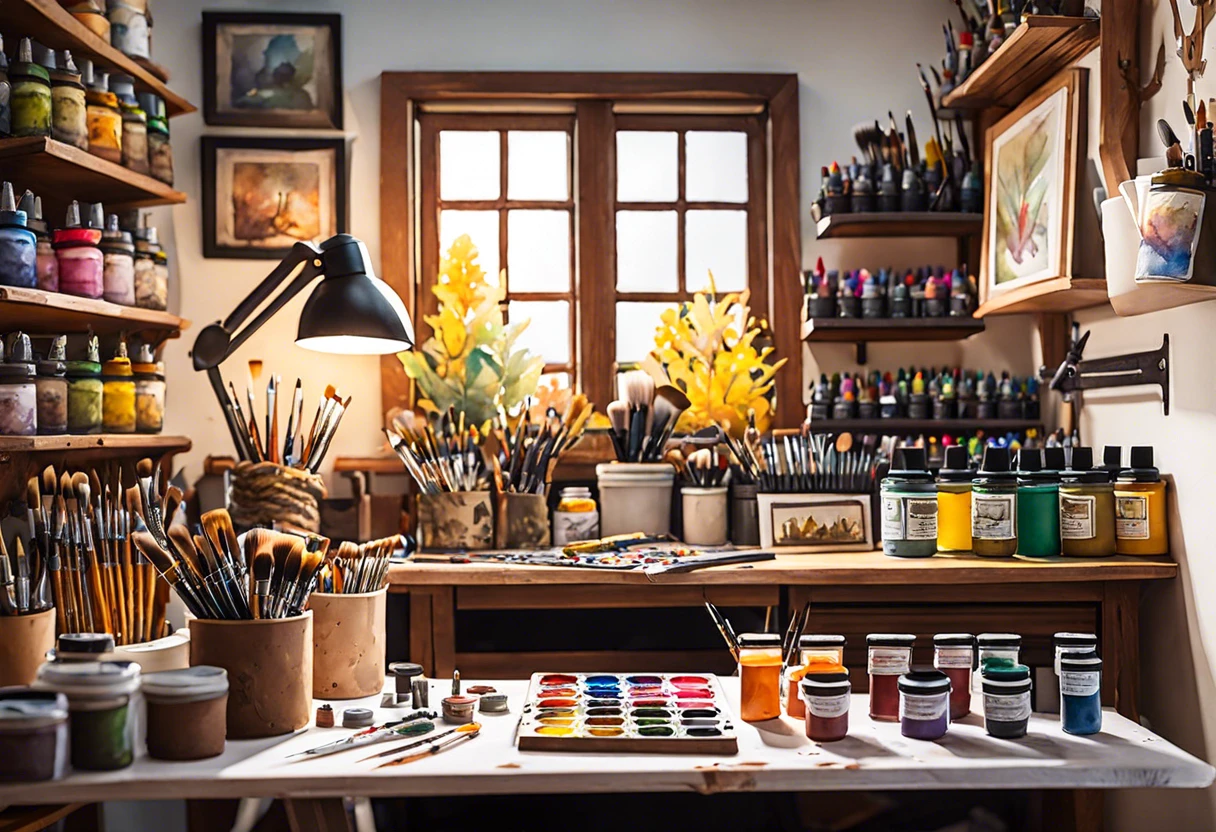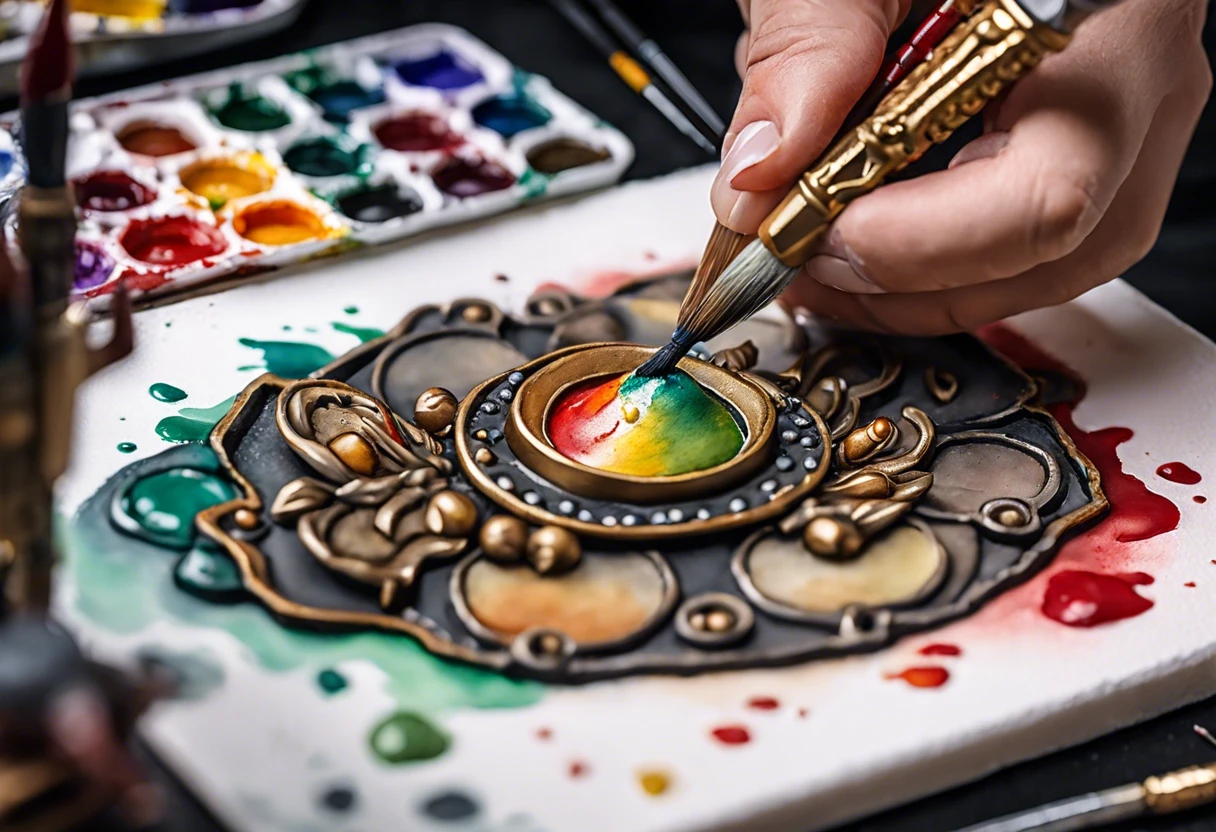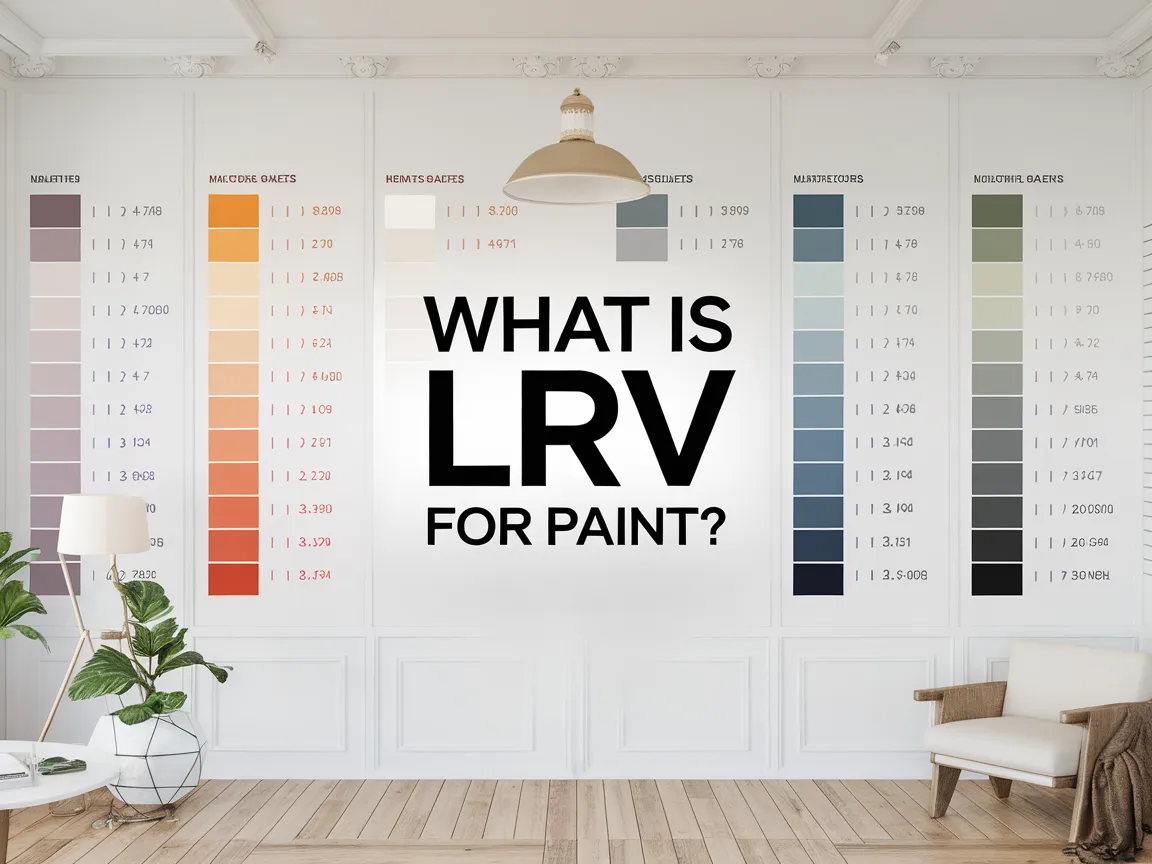What Do You Need to Paint Warhammer Minis?
Warhammer Minis are tiny models that you can paint and decorate to create warriors and creatures in a fun game. Imagine little soldiers or dragons, all made out of plastic, waiting for your artistic touch!
To truly enjoy the hobby, knowing what do you need to paint warhammer minis is key. I remember my first time painting was a mix of excitement and confusion; having the right tools made all the difference.
In this guide, we’ll go over the essentials, like tools, paints, techniques, finishing touches, and common miniature painting problems. You’ll learn about colors, types of paints needed, and how to bring your favorite characters to life—whether it’s how to paint a Necron or how to paint eyes on miniatures.
Contents
- 1 What Do You Need to Paint Warhammer Minis?
- 2 What is ‘Warhammer Minis’?
- 3 Before You Start Painting Your Warhammer Minis
- 4 Steps to Successfully Paint Warhammer Minis
- 5 Factors Affecting the Painting Process
- 6 Common Issues Encountered While Painting Warhammer Minis
- 7 Base Coating and Its Importance
- 8 Tools to Enhance Your Painting Skills
- 9 Finishing Touches for Perfectly Painted Warhammer Minis
- 10 DIY Project Ideas for Customizing Warhammer Minis
- 11 FAQ About Painting Warhammer Minis
- 12 Conclusion
- 13 Additional Resources
What Do You Need to Paint Warhammer Minis?
To paint Warhammer minis, you’ll need quality acrylic paints, fine brushes, and primer. Grab a palette and some water for cleaning. Don’t forget a reliable workspace and a magnifying glass for those pesky details! If you’re wondering about painting techniques for different surfaces, painting over existing surfaces can offer helpful strategies for your miniature painting project.
The Finishing Touch
A freshly painted wall is a blank canvas. The best way to bring your room to life is with a single piece of statement art that ties everything together.
Browse Wall Art at Big Wall DecorWhat is ‘Warhammer Minis’?
Warhammer Minis are miniature figurines used in tabletop games, notably the Warhammer 40,000 and Warhammer Age of Sigmar series. These models are usually made from plastic or resin and stand about 25-32 mm tall (1-1.25 In), representing various factions, creatures, and characters in a detailed sci-fi or fantasy universe.
To paint Warhammer Minis, you’ll need acrylic paints designed for miniatures. From my experience, using the right brushes and having a steady hand really helps when adding those details.
I remember using fine-tip brushes for the tiny eyes; it felt rewarding to see the character come alive. Learning how to paint eyes on miniatures opened up a new world for me, providing techniques that really make these figures pop with personality.
Before You Start Painting Your Warhammer Minis
What do you need to paint Warhammer minis?
- High-Quality Acrylic Paints: Look for brands like Citadel, Vallejo, or Reaper, such as Citadel Base Paint or Vallejo Model Color. These provide vibrant colors and better coverage.
- Detail Brushes: Get fine-tipped brushes, such as Wargames Factory Detail Brushes in sizes 00-3. These are essential for precision and small details.
- Palette or Mixing Surface: You’ll want a disposable palette, like the Masterson Safe-Lock Palette, to control paint consistency while mixing colors.
- Primer: Use a primer like Citadel Spray Primer or Army Painter Colour Primer. Priming minis ensures better paint adhesion and durability.
- Sealant Spray: Don’t skip the sealer, like Testors Dullcote. It’s important for protecting your painted minis from wear and tear.
You should now have a good understanding of preparing your workspace, gathering materials, and choosing your colors. In the next part, we’ll discuss the steps for successfully painting Warhammer minis. If you’re curious about different paint types that can enhance your miniature painting technique, alkyd paints offer unique properties.
Also See: Can You Paint Christmas Lights? Yes, and Here’s How!

The Finishing Touch
A freshly painted wall is a blank canvas. The best way to bring your room to life is with a single piece of statement art that ties everything together.
Browse Wall Art at Big Wall DecorSteps to Successfully Paint Warhammer Minis
Here are the steps to ensure a fantastic finish on your Warhammer minis.
-
Choosing the Right Paints
Select high-quality acrylic paints designed for miniatures. Pick around 10-15 colors for skin, armor, and organic materials.
I often use Citadel or Vallejo paints; they provide great coverage and blend well. Thin layers yield better results than heavy applications.
-
Deciding Paint Consistency
Thin your paints with water or a medium until you reach a milk-like consistency. This helps apply smooth, even coats and avoids gloppy patches.
You want the paint to flow easily off your brush! Gradually build up colors rather than struggling with thick paint that won’t stick.
-
Preparing the Miniatures
Prime your miniatures with spray primer to ensure proper paint adhesion. Use a light, even coat to avoid obscuring details on the model.
Let the primer dry fully before painting—usually for 30-60 minutes. Proper preparation is key to great paint jobs!
-
Utilizing Basic Painting Techniques
Start with base coats; cover the largest surfaces with your main colors first. Use a clean brush to avoid unnecessary color mixing.
After base coating, layer on highlights to add depth. Try dry brushing for texture on raised surfaces—it brings your miniatures to life!
-
Adding Details
Once the base colors are set, focus on detail work. Use fine-tipped brushes for precision on areas like eyes or insignias; it’s helpful to have various sizes on hand.
Refer to online photos for inspiration! I often discover new techniques by seeing how fellow painters tackle tricky details.
-
Sealing Your Work
Finish by applying a clear sealant to protect your paint job. Choose between matte, satin, or gloss, depending on the desired look; matte offers a classic finish.
After applying, allow 24 hours for everything to cure. Trust me, sealing your minis properly makes a significant difference in their longevity.
We have now covered the essential steps to paint Warhammer minis. Next, we will discuss factors that affect the painting process.
Factors Affecting the Painting Process
What factors influence painting miniature figures for Warhammer?
-
Type of Miniature: Different materials, like plastic or metal, need specific paints and techniques.
-
Painting Environment: Good lighting and a clean workspace boost detail visibility and accuracy.
-
Skill Level: Your experience affects paint application and blending techniques.
-
Paint Quality: Higher-quality paints offer better coverage and vibrant colors, which are essential for realism.
We covered elements influencing the painting process here. We will now cover typical problems faced when painting Warhammer minis.
Common Issues Encountered While Painting Warhammer Minis
Last week, my friend struggled with mixing paint for his Warhammer minis. He grabbed the wrong ratios, resulting in muddled color and uneven texture. Isn’t that frustrating?
To fix it, use a 1:2 ratio of paint to water (Or Thinner) for a smooth blend. A palette knife works wonders for achieving the perfect mixture!
We’ve wrapped up common challenges faced when painting Warhammer minis here. Let us turn our attention to base coating and its significance.

Base Coating and Its Importance
Base coating is the first and most critical step in painting!
- Purpose: It establishes the primary color of your mini, providing a solid foundation.
- Recommendation: Use about 2-3 thin coats for even coverage, allowing each layer to dry.
- Tip: Apply the base coat in a well-lit area for better visibility and precision!
Tools to Enhance Your Painting Skills
Investing in a few extra tools can improve your painting experience significantly!
| Tool | Purpose | Price Range (USD) |
|---|---|---|
| Wet Palette | Keeps paint moist and workable longer | $10 – $20 |
| Magnifying Lamp | Improves visibility for fine details | $30 – $60 |
| Brush Holder | Prevents brush bending and damage | $5 – $15 |
| Airbrush | For smooth, even coverage and gradient effects | $50 – $200 |
Finishing Touches for Perfectly Painted Warhammer Minis
After you’ve completed all the brushwork, seal your Warhammer Minis with a matte varnish. Use a spray varnish, like Testors Dullcote, for smooth protection in temperatures above 18°C (65°F).
Inspect every nook and cranny of your minis. Look for uneven paint layers, brush strokes, or thin spots. Use a magnifying glass or lighted loupe for precise inspection—like the one I got from Amazon.
If you’re experienced, like me, mix in advanced additives such as Liquitex Slow-Drying Medium for smoother paint blending techniques. It extends drying time by up to 30% while maintaining color vibrancy for added detail depth. When exploring creative painting techniques, you might also want to experiment with painting artificial decorative elements to expand your artistic repertoire.
The Finishing Touch
A freshly painted wall is a blank canvas. The best way to bring your room to life is with a single piece of statement art that ties everything together.
Browse Wall Art at Big Wall DecorDIY Project Ideas for Customizing Warhammer Minis
Imagine transforming plain Warhammer minis into vivid characters bursting with personality! One unique idea is to create glowing weapons using glow-in-the-dark paint, or even better, try adding a miniature diorama base for a pop-up battle scene.
To get started, you’ll need some glow-in-the-dark paints, which usually cost around $10 for a set, and the diorama materials—think foam board and textures—from your craft store, totaling about $25. You could whip this up in about 3 to 4 hours, perfect for a weekend project!
If you’re looking to add some adorable details to your diorama, I recommend exploring painting cute rabbit figures that will bring your scene to life.
If you’re wondering what do you need to paint Warhammer minis, try using light glycerin for weathering effects or even coffee for a rustic touch; it’s super creative and cheap! My personal favorite? Mix powdered chalk with water to whip up custom paints that blend brilliantly with your style.
FAQ About Painting Warhammer Minis
Can I Use Regular Paints to Paint Warhammer Minis?
Yes, you can use regular paints to paint Warhammer minis, but it’s not recommended. Acrylic paints made specifically for miniatures offer better adhesion and finish. Regular paints often lack the fine pigments which can lead to a lackluster appearance.
How Long Does It Take to Paint a Warhammer Mini?
The time it takes to paint a Warhammer mini can vary widely, but expect anywhere from 2 to 10 hours on average. Factors like detail level and your skill can influence this. More intricate designs require more hours. If you’re looking to expand your painting techniques, painting wooden birdhouses can offer additional miniature painting practice.
What Are Some Common Techniques for Painting Miniatures?
Some common techniques for painting miniatures include base coating, washing, and dry brushing. Base coating provides the foundational color, while washing adds depth, and dry brushing enhances texture. When working with miniatures, temperature can significantly impact paint application and quality. You’ll want to know the right conditions for optimal painting results when painting in cold weather. Master these techniques to elevate your warhammer painting skills!
Do I Need to Thin My Paint Before Using It on Warhammer Minis?
Yes, you need to thin your paint before using it on Warhammer minis. Thinning your paint ensures smoother application and helps avoid clumping. A good rule of thumb is to use 1 part water to 2 parts paint for optimal consistency. After painting, proper brush maintenance is crucial to preserve your tools. You can clean your brushes effectively to extend their lifespan and maintain their precision.
Is It Necessary to Prime Warhammer Minis Before Painting?
Yes, it is necessary to prime Warhammer minis before painting. Priming creates a surface that helps paint adhere better, enhancing durability. Skipping this step can lead to paint peeling, especially for intricate details. If you’re wondering about maintaining your painted miniatures, cleaning flat paint surfaces requires specific techniques to preserve their finish.
How Do I Paint Eyes on Miniatures?
To paint eyes on miniatures, use a steady hand and a fine brush; start with a black base for the eye. Then, add white and finish with a color for the iris. This technique enhances your mini’s realism tremendously!
Conclusion
We’ve reached the end, and I appreciate you sticking around. We covered the essential items like brushes, paints, a palette, primer, sealant, and even a color wheel useful for your Warhammer Minis.
Happy painting! To answer ‘what do you need to paint Warhammer minis’, remember the core tools are brushes, acrylic paints, primer, and a sealing finish. Having these can make a world of difference in your painting journey.
If you’re looking for more insights and resources, check out Paint Answers.
Additional Resources
- r/Warhammer40k on Reddit: What are all the tools I need to start painting Warhammer 40k figures? For a beginner.
- Build and paint your first Warhammer model: perfect for …
Isabella is a Filipino-American art writer and critic specializing in contemporary painting, blending her Filipino heritage with global art trends. She holds a BFA from California State University, Long Beach, and a Minor in Art History from the University of the Philippines. Isa has experience as a Gallery Assistant, Art Appraisal Specialist, and Social Media Creative for Art & Design.
Blending, Topics









